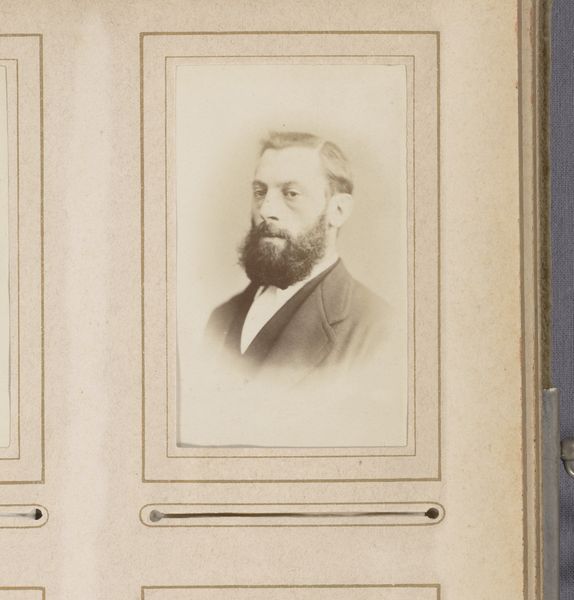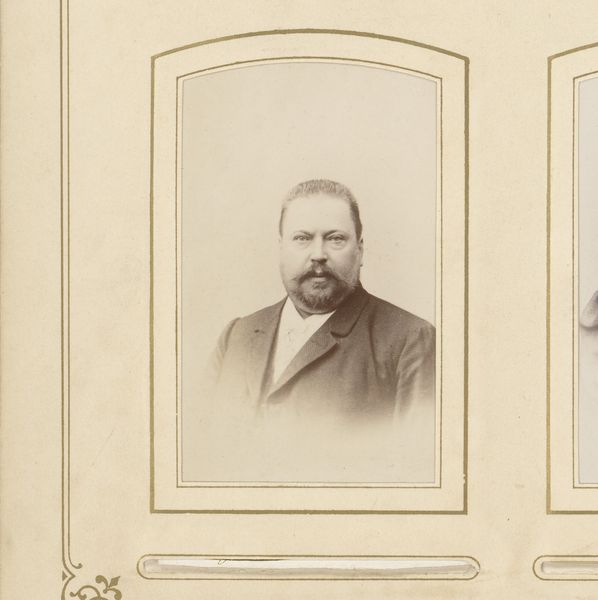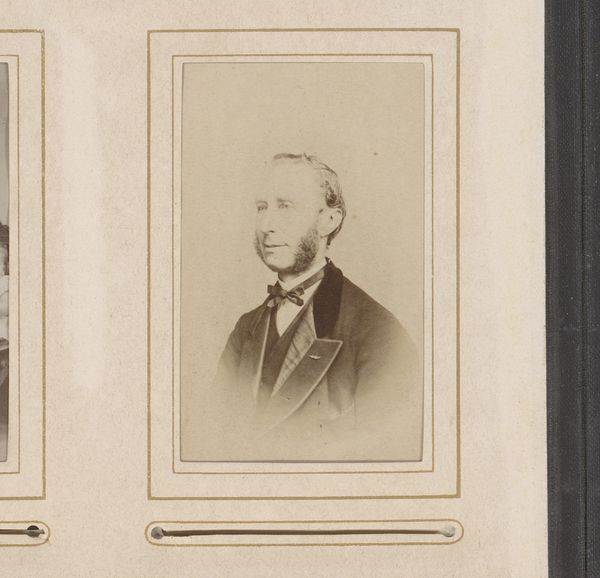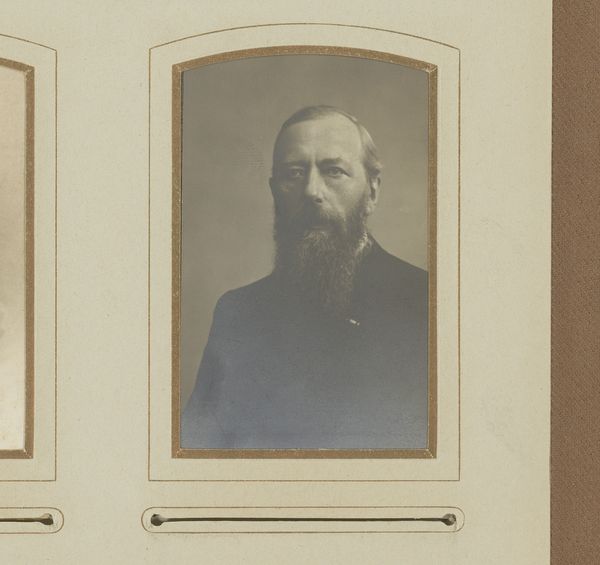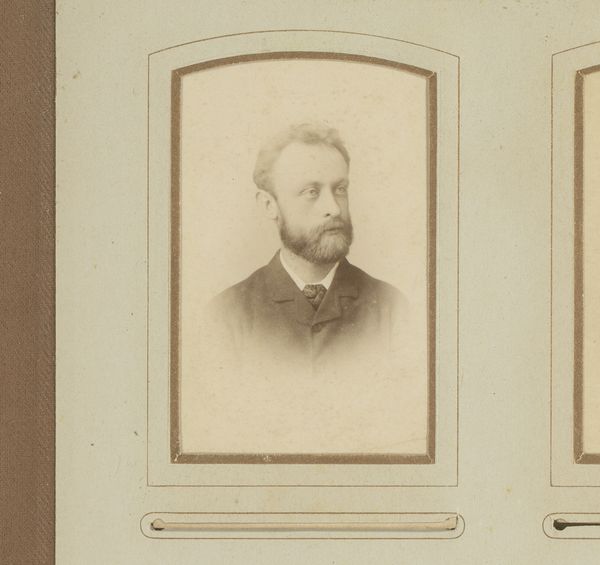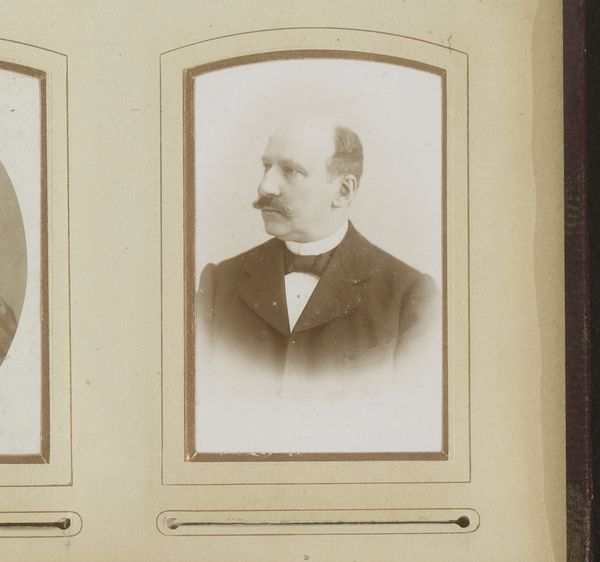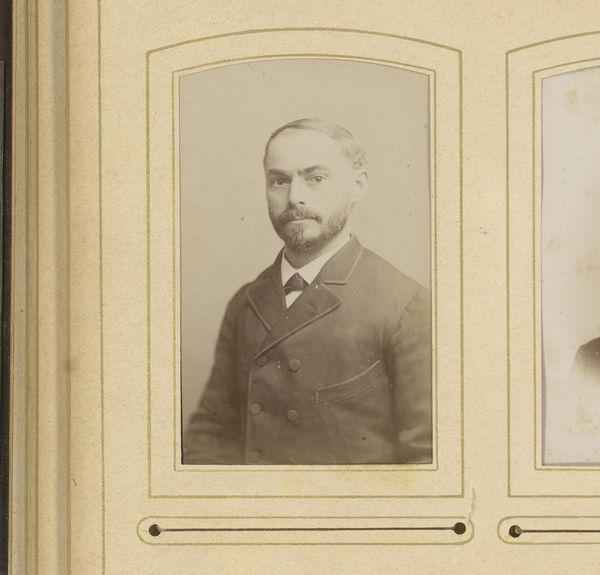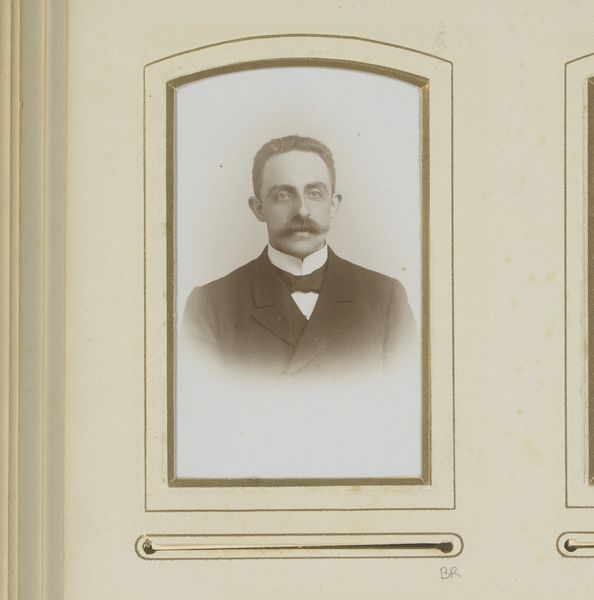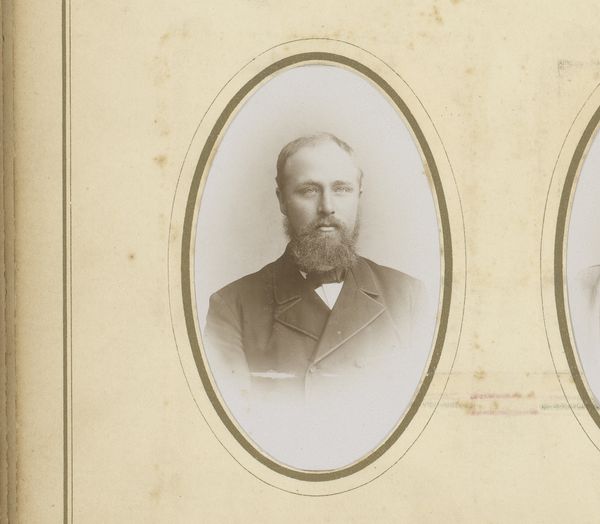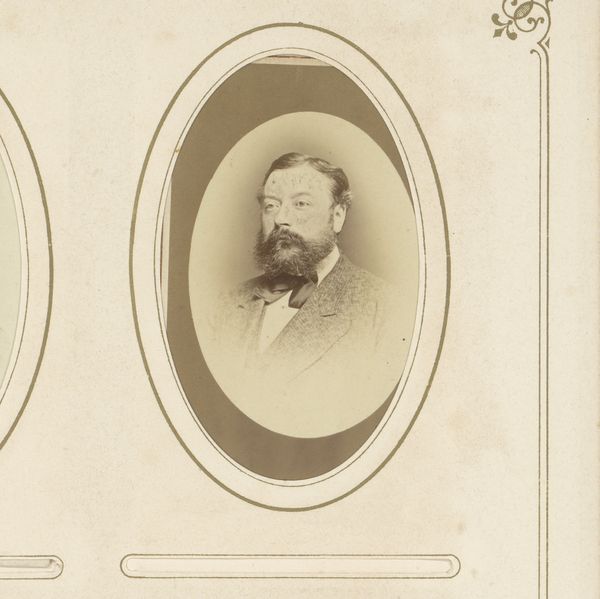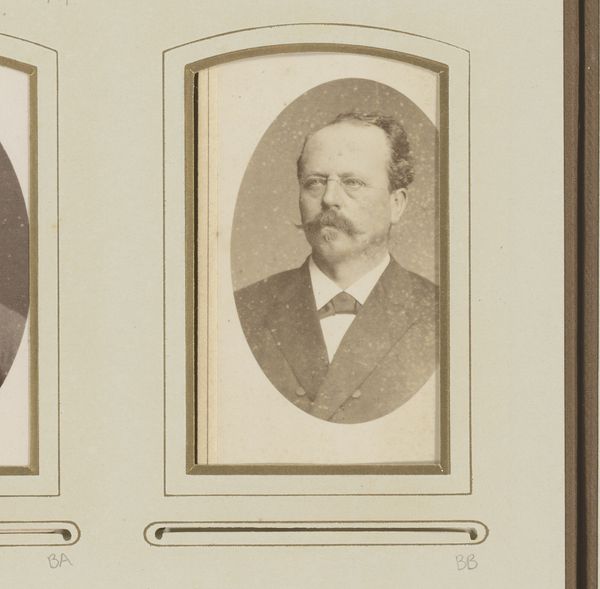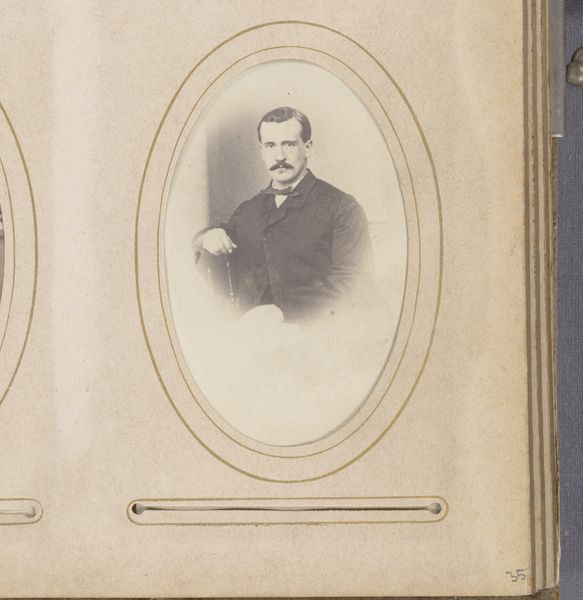
photography, photomontage
#
portrait
#
photography
#
photomontage
#
genre-painting
Dimensions: height 83 mm, width 50 mm
Copyright: Rijks Museum: Open Domain
Curator: This photograph, "Portret van een man met baard" by Roelof Loots, likely dates from sometime between 1860 and 1890. It appears to be a photomontage, capturing a formal portrait typical of that era. Editor: My initial impression is of remarkable softness. The sepia tones and slightly blurred edges evoke a feeling of faded memory. The sitter’s pose conveys a kind of quiet authority. Curator: These portraits, common in the mid-19th century, speak volumes about the rise of the middle class and their aspiration for social visibility. Photography offered a means of memorialization and status that was, for the first time, accessible to a broader segment of society. Editor: Indeed, but look closely at the composition. The subject is positioned centrally, drawing the eye directly. Note how his crossed arms create a visual barrier. Is this intentional? Does it subtly project a certain reserved nature or social standing? Curator: That visual barrier could symbolize a constructed identity, very deliberately posed. Portrait studios actively sold narratives. The stern demeanor, fashionable clothing, and overall presentation served to project success, respectability, and belonging. These images circulated among family and acquaintances, solidifying those desired perceptions. Editor: And let’s not disregard the manipulation inherent in a photomontage. The seamless combination of separately captured elements raises questions about the constructed reality. Was the background real? Were adjustments made to the sitter’s likeness? Curator: Precisely! Photography wasn't inherently truthful. Retouching and staging were integral to shaping public perception and ideals, which influenced the development of cultural norms. Loots and his contemporaries played an active role in shaping societal ideals, framing and containing the definition of manhood for his viewers. Editor: Examining how the sepia tone mutes detail, yet enhances the sitter's features, highlights photography's transformative potential, and reinforces my impression of faded grace. I had almost forgotten my initial thought. Curator: Indeed. We have uncovered how seemingly simple portrait photographs are powerful records of aspiration and influence within a very specific time. Editor: It’s like gazing not just at an individual, but at a cultural moment itself.
Comments
No comments
Be the first to comment and join the conversation on the ultimate creative platform.
